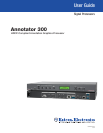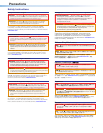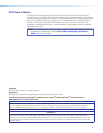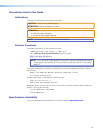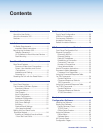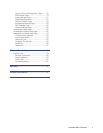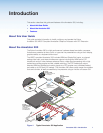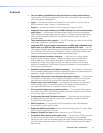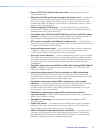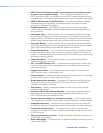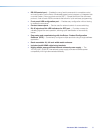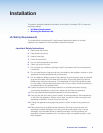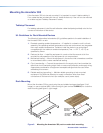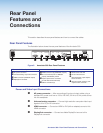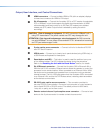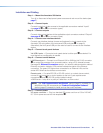
Features
• Live annotation capabilities plus high performance scaling and switching —
The Annotator 300 allows a presenter to draw, point, or add text in real-time over live
video and graphics presentations.
• Inputs — Includes one HDMI; one DisplayPort; one universal 15-pin HD input for
RGB, component video, S-video, or composite video.
• Outputs — Includes two HDMI, one DTP twisted pair output on RJ-45
• Integrated three-input switcher with HDMI, DisplayPort, and universal analog
video inputs — The Annotator 300 delivers fast, reliable input switching between
HDMI, DisplayPort, and analog video sources. The universal auto-detecting analog
video input automatically detects incoming RGB, component video, S-video, or
composite video.
• Three simultaneous video outputs — One DTP twisted pair output and two HDMI
outputs are available for driving three displays.
• Integrated DTP output supports transmission of HDMI with embedded audio
and control up to 330 feet (100 meters) over a shielded STP cable — The DTP
output supports digital signal transmission of HDMI with embedded audio and control
up to 330 feet (100 meters) over a shielded STP cable, providing high reliability and
maximum performance on an easily installed cable infrastructure.
• Intuitive graphical annotation interface — A user-friendly on-screen display
enables quick and easy annotation. Essential annotation tools are available for
drawing freehand or lines, adding rectangular or elliptical shapes, typing text,
highlighting an area of an image, pointing to an object on-screen, and using the
screen as a whiteboard. Customization options are available for text and graphics,
including point size and color.
• Hardware-based graphics and video processing — The Annotator 300 features
a fully hardware-based system architecture designed to deliver the performance and
operational reliability essential for mission-critical applications.
• Compatible with popular touch displays and graphics tablets — The Annotator
300 supports a wide variety of touch displays and graphics tablets from third-party
manufacturers, and also can be used with a standard keyboard and mouse.
• Capture, store, and recall images — An image can be captured as a snapshot
of the live video output, including annotations, and saved to internal memory, a
removable USB flash drive, or a network location for archiving.
• Print captured images using a network printer — The Annotator 300 supports
connection to a printer on the network, enabling captured images to be sent directly
to the printer without connecting to a PC.
• Configurable Main and Confidence outputs — The outputs can be configured
as separate Main and Confidence outputs with individually controlled visibility of
annotation and OSD graphics.
• HDCP compliant — Fully supports HDCP-encrypted sources, with selectable
authorization for unencrypted content.
• Supported HDMI specification features include data rates up to 6.75 Gbps, Deep
Color, and HD lossless audio formats
• Supports DisplayPort input signals at resolutions up to 2560x1600
• Compatible with shielded twisted pair cable — The Annotator 300 fully supports
a maximum transmission distance of 330 feet (100 meters) for all compatible
resolutions when used with shielded twisted pair cable. Shielded twisted pair cabling
with solid center conductor sizes of 24 AWG or better is recommended for optimal
performance.
Annotator 300 • Introduction 2



